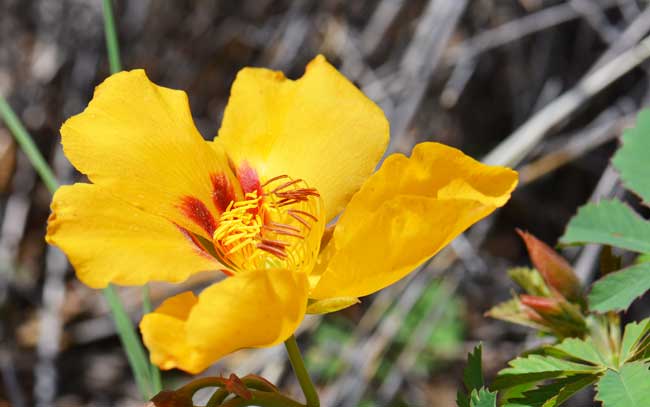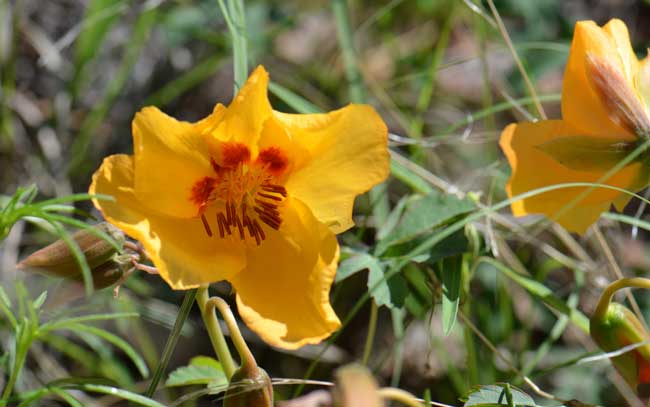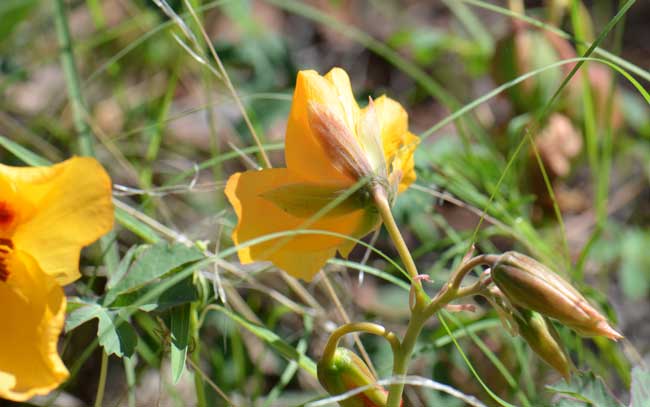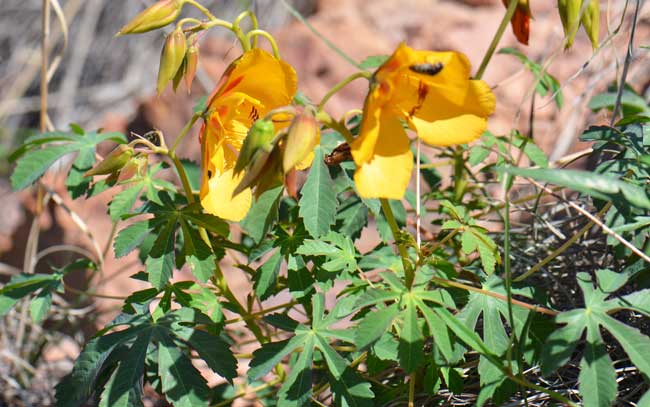Amoreuxia palmatifida, Mexican Yellowshow




Scientific Name: Amoreuxia palmatifida
Common Name: Mexican Yellowshow
Also Called: Throwup Weed (Spanish: Saya, Zaya, Saiya, Saiy)
Family: Bixaceae, Annatto or Lipstick-tree Family
Synonyms: (Amoreuxia schiedeana)
Status: Native
Duration: Annual
Size: Up to 12 inches more or less.
Growth Form: Forb/herb; with large tuberous root.
Leaves: Green; without much pubescence, palmately divided or parted into or more lobes, long petioles.
Flower Color: Yellow; yellow with maroon blotches and showy maroon anthers, short inflorescence, fruit is a capsule.
Flowering Season: July to August.
Elevation: 3,500 to 5,500.
Habitat Preferences: Rocky slopes and mesas.
Recorded Range: Very rare in the United States where it is native to Arizona and New Mexico. In Arizona this species is found in moderate numbers in the south and southeast parts of the state (Coronado National Forest) and in limited numbers in extreme southwest New Mexico.
North America & US County Distribution Map for Amoreuxia palmatifida.
U.S. Weed Information: No data available.
Invasive/Noxious Weed Information: No data available.
Wetland Indicator: No data available.
Threatened/Endangered Information: No data available.
Amoreuxia gonzalezii, Santa Rita Mountain Yellowshow is a threatened plant found only in Arizona; and
Amoreuxia wrightii, Wright's Yellowshow, which is found Texas.
Comments: Mexican Yellowshow is a small plant with pretty slightly irregular flowers. Most habitats for this species are in the Coronado National Forest, often near the Mexican boundary. According to Arizona Flora, the roots of this plant were roasted and eaten by Native Americans in southern Arizona and its fruits used as food in Sonora and Chihuahua Mexico.
See ethno-botanical uses at Native American Ethnobotany, University of Michigan, Dearborn.

